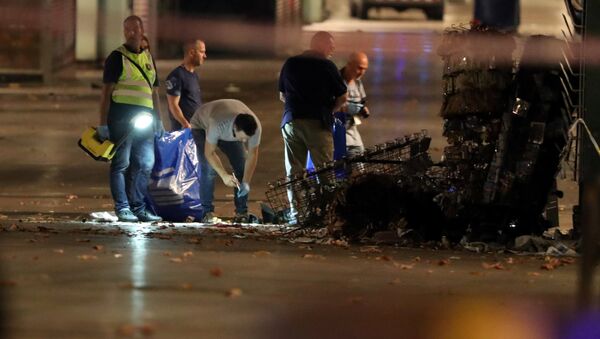Terrorist Attacks

August 17, 2017, in the Spanish cities of Barcelona and Cambrils, a series of terrorist attacks took place, killing 16 people and injuring more than 130. In the afternoon, a van drove into a crowd of people in the tourist center of Barcelona - in the area of the pedestrian street Rambla. The car was traveling at a speed of about 80 kilometers per hour. The driver intentionally drove it in zigzags, trying to hit as many people as possible. The van stopped only after the collision with a kiosk, having driven about 600 meters along the street. Due to the large amount of external damage in the vehicle, the safety system (airbags) was automatically triggered and the electronics were blocked. The terrorist, taking advantage of the panic, was able to escape. He disappeared in the stolen car, killing the driver and hitting a police patrol.
The attack killed 15 people and injured more than 100. Among the wounded were citizens of more than 30 countries, as August is the peak month for tourists in Spain. A few hours after the first attack, at night, a car drove into a group of people in the small resort town of Cambrils, 120 kilometers from Barcelona. While evading a Catalan law enforcement patrol, Mossos d'Esquadra, the criminals failed to cope with the steering and the car overturned. When the terrorists tried to escape, a firefight broke out. Police eliminated four criminals, a fifth was wounded and died later. The terrorists wore belts that resembled "suicide belts," which turned out to be fake. The attackers wounded six people. The most serious wound was sustained by a woman who was stabbed by one of the terrorists in an attempt to escape. She later died. A three-day mourning period was declared in Spain for the victims of the attacks.
The banned terrorist group Islamic State claimed responsibility for the attacks. A law enforcement investigation revealed that the group behind the attacks included 12 people - 11 Moroccans with residency permits in Spain and one of Moroccan origin from Melilla, a Spanish city on the Mediterranean coast of Africa. The organizer of the attacks was the imam of Ripoll, Abdelbaki el-Sati. Members of the terrorist cell met for six months in a house in the Spanish city of Alcanar and planned the attacks. In the days before the attack, the cell leaders searched for places where they could set off an explosion. They were interested in the most popular and frequented nightclubs in Barcelona and the city of Lloret de Mar, the next FC Barcelona match at Camp Nou and the Sagrada Familia cathedral.
After analyzing the cell phone of Mohammed Hichami, who was eliminated by police after the terrorist attack in Cambrils, investigators concluded that the terrorist cell had originally planned to attack the Camp Nou stadium in Barcelona on August 20 during the soccer match between FC Barcelona and Real Betis soccer clubs there. In the terrorist's phone, investigators found a dozen search engine queries on the subject of Camp Nou, all of them made a week before the attacks. The phone user was interested in all the details related to the stadium - photos, game schedules, and the location of the entrances. One of the clerks at the Barcelona club's brand store also reported that at least two members of the cell had bought products with the team's insignia in the days before the attacks.
The terrorists were also looking for blueprints for the Eiffel Tower, an attack police believe they were planning after the attacks in Barcelona. In the attacks, the gunmen planned to use more than 100 kilograms of TATP (acetone peroxide, a bomb known as "Mother of Satan") explosives, which they made in a house in Alcanar using gas cylinders. There they also stored more than 100 bottles of butane, some of which were stolen from gas stations and residences.


